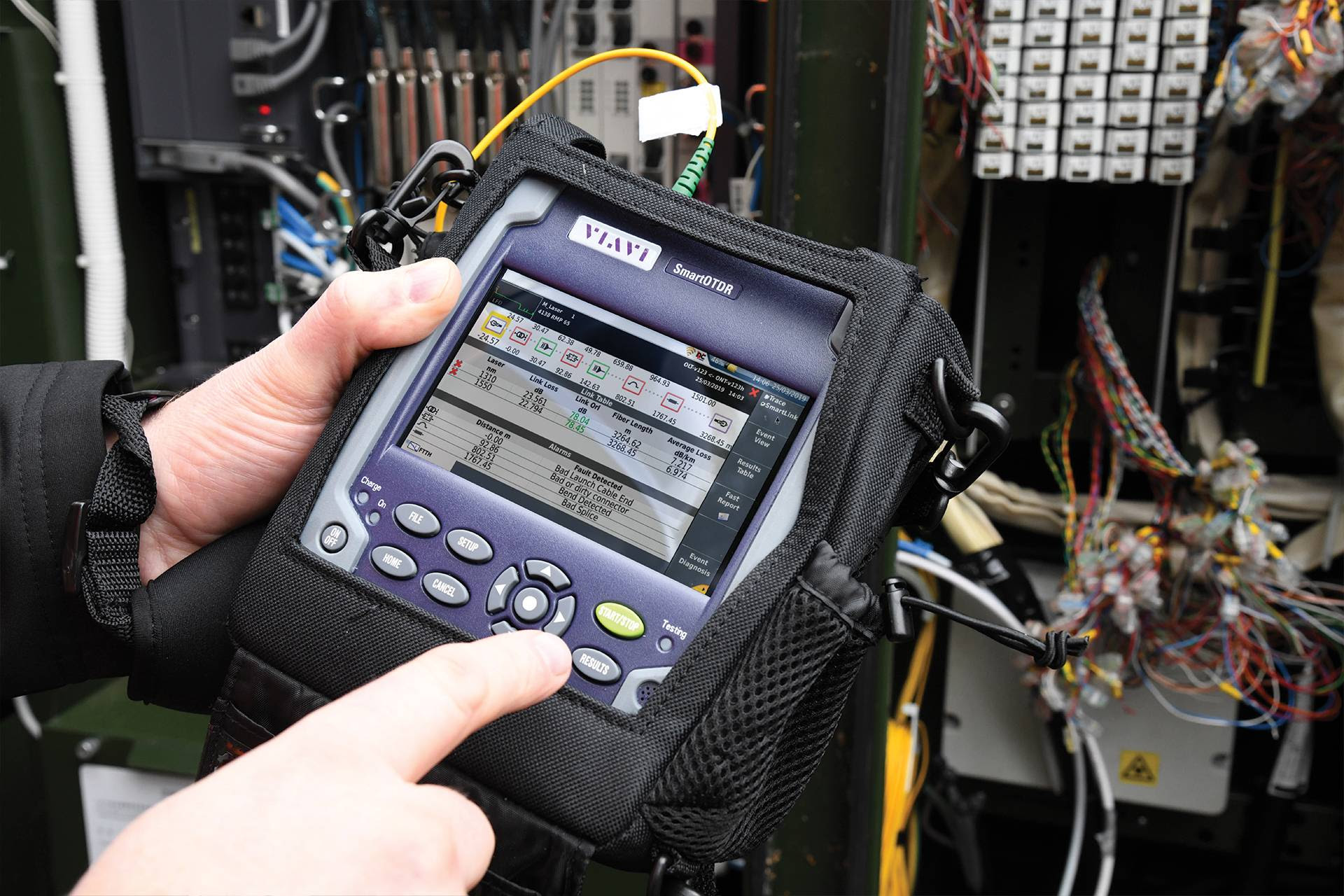There are a wide number of OTDR models available, addressing different test and measurement needs. Choosing the right OTDR isn’t always about knowing the in-depth OTDR specifications, a good knowledge of the application and the answer to some basic questions can be all you need:
- What kind of networks will you be testing? LAN, FTTH/PON, metro, long haul?
- What fiber type will you be testing? Multimode or single-mode?
- What is the maximum distance you might have to test? 700 m, 25 km, 150 km?
- What kind of measurements will you perform? Construction (acceptance testing), troubleshooting, in-service?
To help navigate the wide range of OTDR test solutions available, VIAVI OTDR selector tool will help guide you to the right OTDR Test solution for your needs. Start by simply selecting your application from the five categories and answer the questions to proceed to your ideal OTDR test solution.
If you require more information or prefer to talk to someone, you can call us on 1800 COVERTEL (1800 268 378) or contact us here.
What is an OTDR?
OTDR stands for Optical Time Domain Reflectometer. It is a special device that uses laser light to measure events on fiber links of an optical and telecoms networks. An OTDR detects, locates, and measures elements in any area of a fiber optic link without having to see the other end. It works by injecting a series of pulses of light through the fibre optic cable and measures the time it takes for the light to be reflected back. The OTDR can then analyze the reflected light to determine how the fiber link is working.
To get a better understanding on OTDR, please feel free to download this OTDR poster.
What does an OTDR measures?
Based on the reflected light, the OTDR is able to measure;
Attenuation (also called fiber loss)
Expressed in dB or dB/km, attenuation represents the loss or the rate of loss between two points along the fiber span.
Event Loss
The difference in the optical power level before and after an event, expressed in dB.
Reflectance
The ratio of reflected power to incident power of an event, expressed as a negative dB value.
Optical Return Loss (ORL)
The ratio of the reflected power to the incident power from a fiber optic link or system, expressed as a positive dB value.
Why do I need an OTDR?
Testing the fibre links in the telecom and optical networks ensures that it can deliver reliable and robust services without interruptions. By using an OTDR to test the fibre optic cables, we can make sure they are working properly and fix any problems before they cause issues.
OTDR Best Practices
To make sure that OTDR testing is reliable, there are a few things you should do. First, use something called a launch cable, which is a spool of fiber with a specific distance. This should be connected between the OTDR (the device used for testing) and the fiber link being tested. The length of the launch cable depends on the link being tested, but it’s usually between 150 and 1000 meters. The fiber length also depends on something called the OTDR attenuation dead zone, which has to do with the width of the pulse. The wider the pulse, the longer the launch cable needs to be.
It’s also important to proactively inspect each fiber connection with a fiber microscope probe, to make sure everything is clean. This will help reduce network downtime and make it easier to troubleshoot problems. And finally, make sure to inspect and clean the OTDR port and the launch cable connectors before connecting the launch cable. The dirty little secret to the majority of fiber network performance issues today are that they are caused by contaminated fiber links. The only way to make sure the networks stay fast and reliable is to INSPECT BEFORE YOU CONNECT (IBYC).
If you want to learn more about this topic, we are running an OTDR Fundamentals & Operations Training course which gives you the essential knowledge to be able to configure, operate and interpret results using an OTDR. You can find more information about the OTDR Training Course here.
